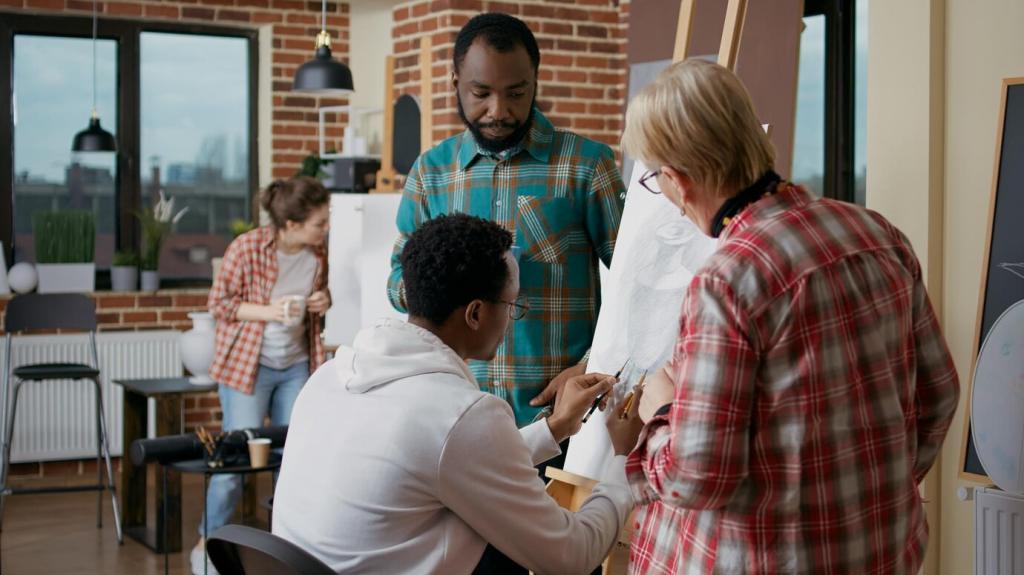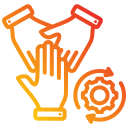Accessible Team Building Activities for All Abilities
Today’s chosen theme: Accessible Team Building Activities for All Abilities. Welcome to a friendly, practical hub where inclusive play sparks real connection. Explore adaptable ideas, hear honest stories, and find concrete steps you can use this week. Join the conversation, share what works for your team, and subscribe for fresh, accessibility-first inspiration.


Icebreakers That Welcome Every Body and Brain
Each person chooses icons or word cards that represent hobbies, accessibility needs, or work preferences. Participants display cards on camera or tables, then browse at their own pace. Offer a chat thread for questions, and let people engage without speaking.
Adaptive Collaborative Challenges
Create stations that tackle parts of a bigger problem using different modalities: visual analysis, narrative mapping, and tactile sorting. Participants rotate only if they want, or stay in preferred zones. Provide written guides, visual cues, and generous breaks.


Adaptive Collaborative Challenges
Use clear turn-taking, longer timers, and visual indicators so no one feels rushed. Offer text-to-speech, card enlargements, and colorblind-safe palettes. Allow teammates to collaborate on a single turn, and let observers contribute notes for strategic support.


Remote and Hybrid Accessibility
Enable live captions and auto-save transcripts. Provide clear keyboard shortcuts and screen-reader compatible agendas. Post materials early in multiple formats. Keep chat, hand-raise, and reactions available so participants choose how and when to contribute.
Remote and Hybrid Accessibility
Offer dial-in audio, lightweight slides, and text-first prompts. Replace heavy video with still images and descriptive summaries. Encourage asynchronous contributions via shared docs, and keep activities available for different time zones and energy levels.
On-Site and Outdoor Activities with Access in Mind
Provide step-free routes, tactile guides, high-contrast signage, and clear maps. Choose smooth surfaces, reserve nearby parking, and schedule frequent rest stops. Share restroom locations and quiet rooms up front so everyone can plan without stress.
Offer low-stimulation areas with dim lighting, noise-reduction options, and comfortable seating. Use visual timers and calm signage. Normalize breaks by scheduling them, not just allowing them. Encourage team leads to model using these spaces.
Publish emergency procedures in plain language with icons. Assign voluntary buddy systems that respect privacy. Ensure staff know mobility, hearing, and sensory considerations, and run a brief orientation that welcomes questions without singling anyone out.



Neurodiversity-Affirming Team Play
Send agendas early with time estimates, visuals, and explicit outcomes. Use consistent cues for start, transition, and finish. Provide scripts or examples for activities so participants know what to expect and can prepare at their own pace.
Neurodiversity-Affirming Team Play
Offer chat, whiteboards, and symbol cards alongside voice. Encourage typed responses and visual mapping. Recognize and validate stim needs, fidgets, and cameras-off participation. Focus on contributions, not performance, and let people choose comfort-first engagement.


Measuring Impact and Iterating Access
Collect input anonymously, in multiple formats, and over several days. Ask about clarity, comfort, and fairness, not just fun. Share results transparently and co-design next steps with participants who volunteer to refine activities.
Measuring Impact and Iterating Access
Track belonging, confidence, and equitable voice time. Measure how many participation pathways were used and which adjustments helped. Celebrate accessibility wins publicly so inclusive choices become prestigious, not invisible, within your culture.
Starter Kits and Practical Resources

Facilitator’s Accessibility Checklist
Prepare materials in multiple formats, schedule breaks, verify assistive tech, and publish expectations early. Include backup plans for audio, visuals, and mobility needs. Invite access requests in plain language and confirm you received them before the event.

Assistive Tools and Materials Library
Stock noise-reduction headphones, large-print cards, tactile objects, caption-friendly platforms, and high-contrast templates. Provide styluses, alternative keyboards, and ramps or risers. Label everything clearly and maintain a sign-out system so supplies remain available.

Inclusive Invitations and Pre-Event Surveys
Write invites that explain goals, timing, and access supports. Include a simple, respectful survey for needs and preferences. Offer multiple contact methods, confirm accommodations, and send reminders with maps, agendas, and accessibility details well in advance.
